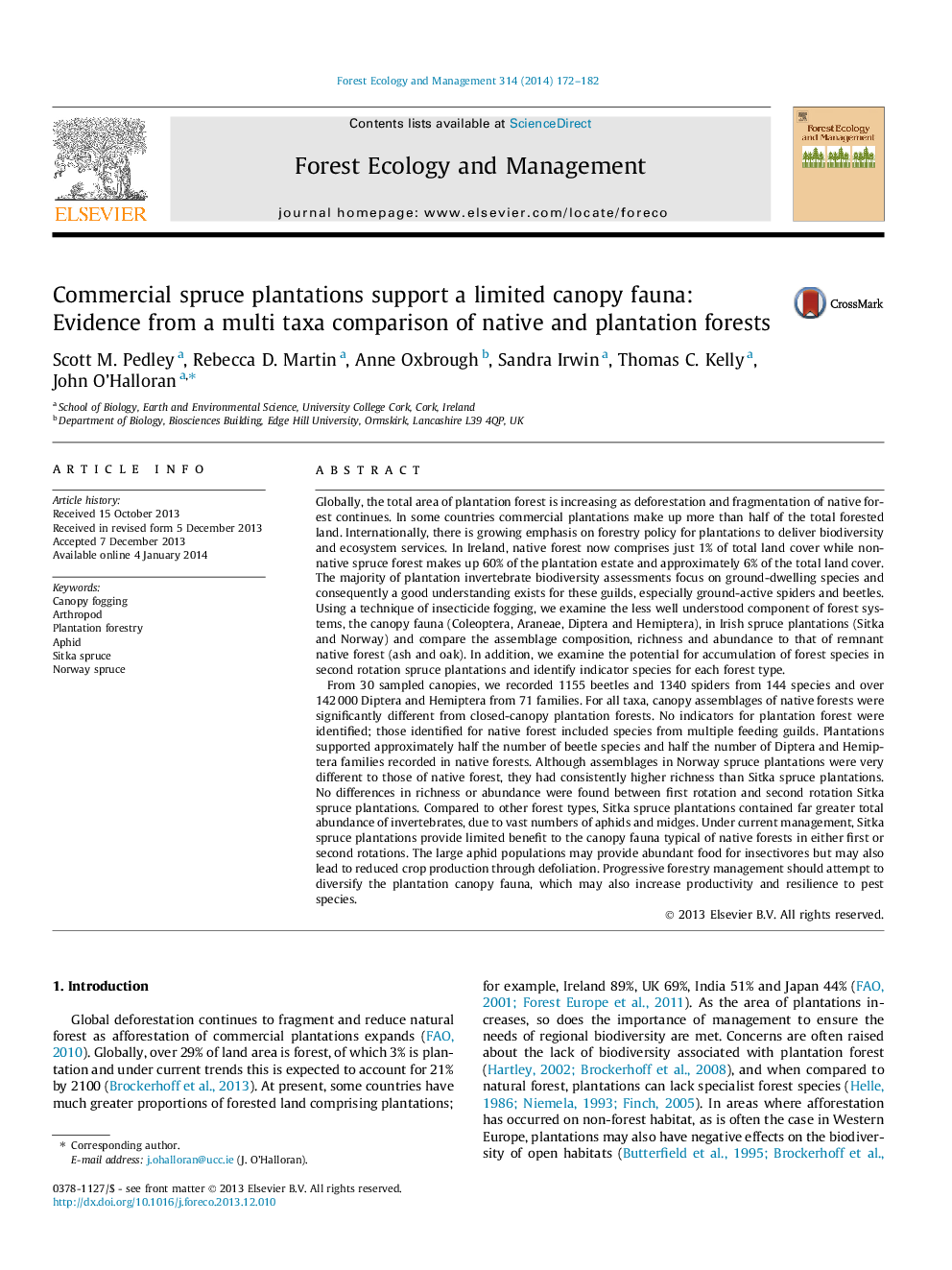| کد مقاله | کد نشریه | سال انتشار | مقاله انگلیسی | نسخه تمام متن |
|---|---|---|---|---|
| 86946 | 159223 | 2014 | 11 صفحه PDF | دانلود رایگان |
• We compared the canopy fauna of non-native spruce plantations with that of remnant native forests.
• For all taxa, plantations supported a distinctly separate assemblage composition.
• Native forests held twice as many beetle species and Diptera and Hemiptera families.
• No differences in community structure were detected between 1st and 2nd rotation plantations.
• Plantations were dominated by ultra-abundant aphid and midge populations.
Globally, the total area of plantation forest is increasing as deforestation and fragmentation of native forest continues. In some countries commercial plantations make up more than half of the total forested land. Internationally, there is growing emphasis on forestry policy for plantations to deliver biodiversity and ecosystem services. In Ireland, native forest now comprises just 1% of total land cover while non-native spruce forest makes up 60% of the plantation estate and approximately 6% of the total land cover. The majority of plantation invertebrate biodiversity assessments focus on ground-dwelling species and consequently a good understanding exists for these guilds, especially ground-active spiders and beetles. Using a technique of insecticide fogging, we examine the less well understood component of forest systems, the canopy fauna (Coleoptera, Araneae, Diptera and Hemiptera), in Irish spruce plantations (Sitka and Norway) and compare the assemblage composition, richness and abundance to that of remnant native forest (ash and oak). In addition, we examine the potential for accumulation of forest species in second rotation spruce plantations and identify indicator species for each forest type.From 30 sampled canopies, we recorded 1155 beetles and 1340 spiders from 144 species and over 142 000 Diptera and Hemiptera from 71 families. For all taxa, canopy assemblages of native forests were significantly different from closed-canopy plantation forests. No indicators for plantation forest were identified; those identified for native forest included species from multiple feeding guilds. Plantations supported approximately half the number of beetle species and half the number of Diptera and Hemiptera families recorded in native forests. Although assemblages in Norway spruce plantations were very different to those of native forest, they had consistently higher richness than Sitka spruce plantations. No differences in richness or abundance were found between first rotation and second rotation Sitka spruce plantations. Compared to other forest types, Sitka spruce plantations contained far greater total abundance of invertebrates, due to vast numbers of aphids and midges. Under current management, Sitka spruce plantations provide limited benefit to the canopy fauna typical of native forests in either first or second rotations. The large aphid populations may provide abundant food for insectivores but may also lead to reduced crop production through defoliation. Progressive forestry management should attempt to diversify the plantation canopy fauna, which may also increase productivity and resilience to pest species.
Journal: Forest Ecology and Management - Volume 314, 15 February 2014, Pages 172–182
